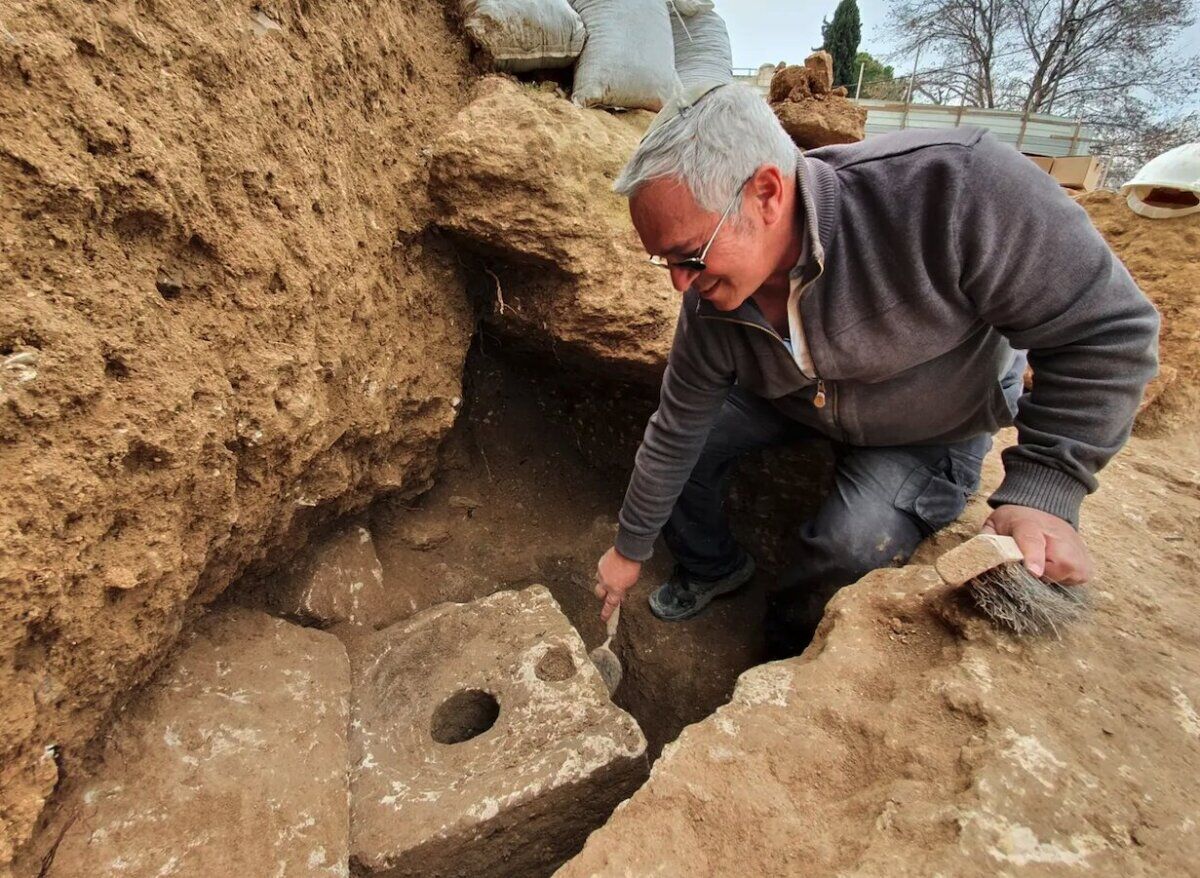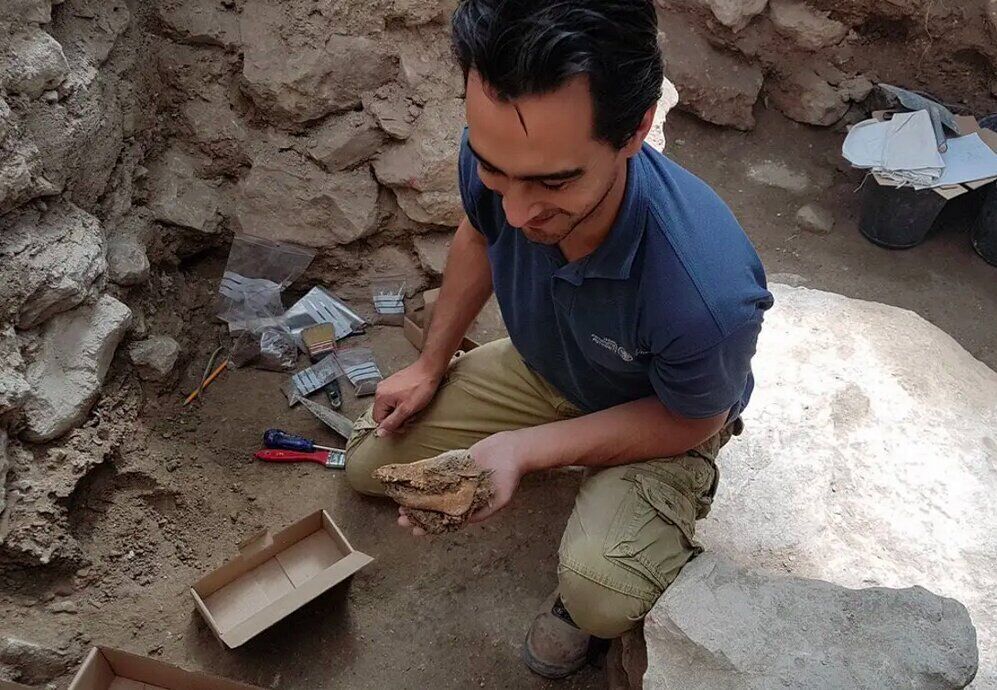Parasites in Ancient Jerusalem: A New Study (Rather Gruesomely) Parallels the Bible
Rich people in ancient Jerusalem suffered from gut parasites, according to a January 4 archaeoparasitology paper published by Dr. Dafna Langgut of Tel Aviv University. Dr. Langgut discovered over 850 fossilized parasite eggs in a cesspit beneath a 2,700-year-old stone toilet unearthed just last year at Armon HaNatziv—an archaeological site just south of the City of David.

The ancient inhabitants of Armon HaNatziv (Hebrew for “the commissioner’s palace”) were undoubtedly wealthy. Along with the stone toilet, director of the Armon HaNatziv excavation Ya’akov Billig discovered remains of a huge mansion dating to the mid-seventh century b.c.e. The palace was situated on a hill directly overlooking the City of David from the south—what would have been prized territory at the time. Even the toilet itself attests to the affluence of Armon HaNatziv’s ancient inhabitants: During the First Temple period, toilets (especially of this nature) were a symbol of wealth. One Rabbi defined a rich man as “anyone who has a bathroom close to his table” (Babylonian Talmud).
Despite their wealth, however, the ancient residents of Armon HaNatziv apparently suffered from gut parasites. In her study, Dr. Langgut discovered the fossilized eggs of whipworms, tapeworms, roundworms and pinworms. These parasites would have inflicted a nasty list of symptoms on their ancient victims, including malnutrition, stunted growth, abdominal pain and vomiting.
Unsurprisingly, the shock value of Dr. Langgut’s study has garnered widespread media coverage. At best, the news stories have been incidental in explanation—pointing out a few general details, such as the fact that poor sanitary conditions likely contributed to the spread of the parasites. At worst, the study has been used as a dig against the Bible. “The Bible tells stories about miracles, wars, kings and prophets, but doesn’t reveal much about the daily lives of the ancient Israelites,” read an article from Haaretz. “A glimpse into the challenges of life during the First Temple period is now offered by the study of a 2,700-year-old toilet found in a Jerusalem palace—and it’s not a pretty sight.”
In short, depending on the source, Dr. Langgut’s paper either has no biblical significance or it exposes the Bible as a biased historical source. Neither view is accurate. In fact, the paper actually rather remarkably confirms the biblical record for this specific period.
Consider a few pertinent facts. The two most numerous types of parasite eggs discovered in the study were whipworm and roundworm. Both spread as a result of poor sanitation, especially fecal contamination of food and water or use of human waste as fertilizer. Another type of parasite in the study was pork tapeworm, which spreads via consumption of undercooked pork. Note also that these parasites were infecting wealthy people in Jerusalem. Any disease that afflicted the wealthy must have been much worse among lower classes, since their living conditions would have been even less sanitary. That means it was probably a citywide or even nationwide epidemic.

According to Dr. Langgut’s paper, the parasite eggs from Armon HaNatziv date roughly to “the period between the reigns of King Hezekiah and King Josiah.” The books of Kings and Chronicles record only two kings between Hezekiah and Josiah. The first and most prominent was King Manasseh, whose reign lasted 55 years. His successor, Ammon, reigned just two years before being assassinated.
The Bible doesn’t speak kindly about the first part of Manasseh’s reign. According to 2 Kings 21:2, “he did that which was evil in the sight of the Lord, after the abominations of the nations ….” Later in the chapter, it says, “Manasseh shed innocent blood very much, till he had filled Jerusalem from one end to another; beside his sin wherewith he made Judah to sin, in doing that which was evil in the sight of the Lord.”
Now, this doesn’t say there was a parasite epidemic during the reign of Manasseh, but it does say the nation was breaking God’s laws. Many of these laws directly relate to sanitation. For example, Deuteronomy 23:14 explains how to properly handle sewage: “And thou shalt have a paddle among thy weapons; and it shall be, when thou sittest down abroad [eliminate], thou shalt dig therewith, and shalt turn back and cover that which cometh from thee.” Bathing and hand washing are commanded throughout the Torah (i.e. Exodus 30:19-20; Leviticus 15; Deuteronomy 21:6), as is quarantine (Leviticus 13).
The Bible also notes the consumption of non-kosher foods in Jerusalem specifically during this time—particularly pork (which is notorious for parasites), as well as rodents and other unmentionables. “I have spread out My hands all the day Unto a rebellious people … That eat swine’s flesh, And broth of abominable things is in their vessels” (Isaiah 65:2, 4). The Prophet Isaiah warned against this behavior: “They that sanctify themselves and purify themselves To go unto the gardens, Behind one in the midst, Eating swine’s flesh, and the detestable thing, and the mouse, Shall be consumed together, saith the Lord” (Isaiah 66:17).

Isaiah was active during the eighth-seventh centuries b.c.e., most notably during the reign of Hezekiah, Manasseh’s father. Jewish tradition holds that Isaiah outlived Hezekiah and was sawn in half on King Manasseh’s orders, for his warnings. Could these scriptures, at the end of the Book of Isaiah, link to the early part of Manasseh’s reign—and also be a link to the prevalence of crippling parasites at this time?
The language of Isaiah 65 and 66 is notable. The verses following the condemnation of such foods in Isaiah 65:4 say that “I will requite [this] into their bosom … [I will] measure their wage into their bosom” (verses 6-7). Could this description include intestinal parasites? Isaiah 66:17 is even more graphic: Those consuming such “detestable things” would themselves be “consumed together” with them. And as this new archaeoparasitology paper reveals, that was indeed the case—Jerusalem’s inhabitants at this time were being “consumed” by the very parasite-ridden things they were devouring.

As such, Dr. Langgut’s discovery isn’t just a trivial historical curiosity, and certainly doesn’t expose the Bible as a melodramatic document. The Bible account describes rampant lawbreaking in Jerusalem during the reign of Manasseh—a failure to obey God’s sanitation laws would be expected. Evidence of parasitic diseases found in Dr. Langgut’s study is exactly what the Bible implies we should expect to find.
The Isaiah 66 chapter concludes (the final verse of the book): “And they shall go forth, and look Upon the carcasses of the men that have rebelled against Me; For their worm shall not die, Neither shall their fire be quenched; And they shall be an abhorring unto all flesh” (verse 24). This Scripture is primarily speaking in a prophetic manner about final judgment. But again, in a sense, this is what we see with the latest study: Examining the “abhorrent” remains of “the men that have rebelled against Me”—including the remarkably still-preserved eggs of parasitic worms.